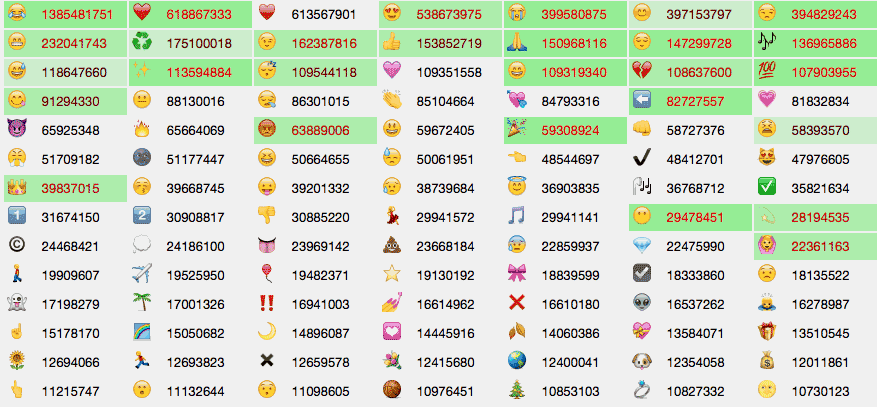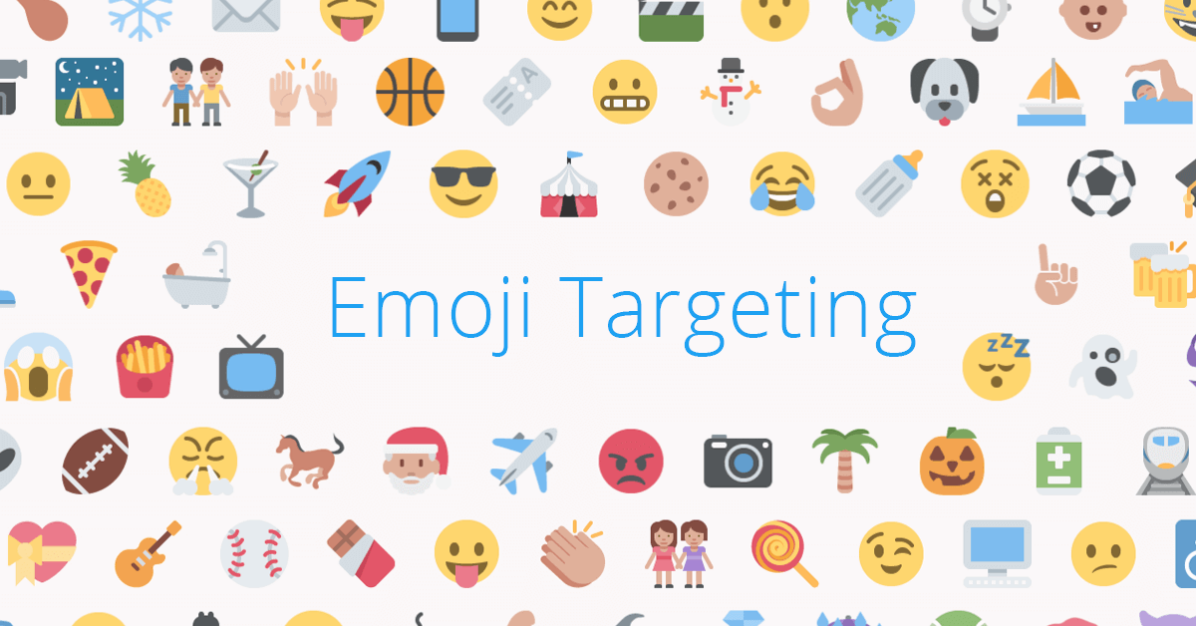Visual communication has come a long way. From cave paintings to tweets, emails to hashtags, we’ve seamlessly adapted to the constantly evolving language in our everyday lives.
Today, emojis are ever present in our everyday communication — whether leveraged as a lucrative branding opportunity à la KIMOJI by Kim Kardashian West, or awkwardly sneaking their way into the US presidential election.
With 92% of internet users adopting emojis into their everyday lexicon, it’s clear that they’ve endured the test of time. And from humble beginnings in 1991 as the big brother of the colon and closing parenthesis pair, they’ve come a long way. Check out this real-time live tracker of all the emojis currently being used on Twitter — the epilepsy warning speaks for itself.


Fun fact: Originally meaning pictograph, the word emoji is derived from the Japanese e (çµµ, “picture”) + moji (æ–‡å—, “character”).
What this means for Advertisers
Advertisers looking to create a sense of community and to establish rapport with their consumers need to speak the same language. The Cassandra Report found that four in 10 Millennials said they would prefer using pictures to communicate versus words alone, and brands are taking note.
In December, General Electric launched its “Emoji Science” Snapchat campaign, where users could send emojis to the company, and receive a message back with a science experiment. In the US, Domino’s Pizza customers can now simply text or Tweet a pizza emoji to place an order.
The examples are endless. Using emojis in brand messaging is not a new phenomenon — but being able to reach consumers by targeting the emojis they use?

How it works
Advertisers can reach users based on emojis in their search queries, recent Tweets, and Tweets they recently engaged with by leveraging Twitter’s keyword targeting. This API-exclusive offering is available through a handful of select Twitter Official Partners such as AdParlor.

Advertisers can leverage both inclusion and exclusion targeting based on emojis, just like they would with keywords:
- ANY: Include or exclude “

 ” written in any order, with any other emojis
” written in any order, with any other emojis - PHRASE: Include or exclude “

 ” written in that order, with any other emojis
” written in that order, with any other emojis - EXACT: Include or exclude “

 ” written in that order, with no other emojis
” written in that order, with no other emojis
Emojis can also be targeted in conjunction with keywords, which enables advertisers to reach precisely the right users, with highly customized messaging, at the right time.
For example:
- Target people who Tweet food emojis to help them satisfy their cravings.
- Reach people watching football — combine emoji targeting with keyword targeting to customize messaging based on their favorite team to drive engagement.
- Connect with people who have expressed sentiment — create that “community feel.”
Request feedback in the form of emojis— this requires less effort from users, and provides more insight than a number on a scale.
This unique targeting layer unlocks a previously untapped opportunity for advertisers in the market. It’s interesting to note that consumers and brands use emojis differently: consumers typically use emojis to express themselves and convey emotion, whereas brands use emojis to gain attention and invoke emotion — something to keep in mind when building your target strategy and crafting your messaging.
The Time is Now
Our language is evolving before our very eyes; now emojis are everywhere, and who knows what’s coming next?
Interested in giving your Twitter ad campaigns an extra boost? Contact us to discuss how adding Twitter emoji targeting can help.
